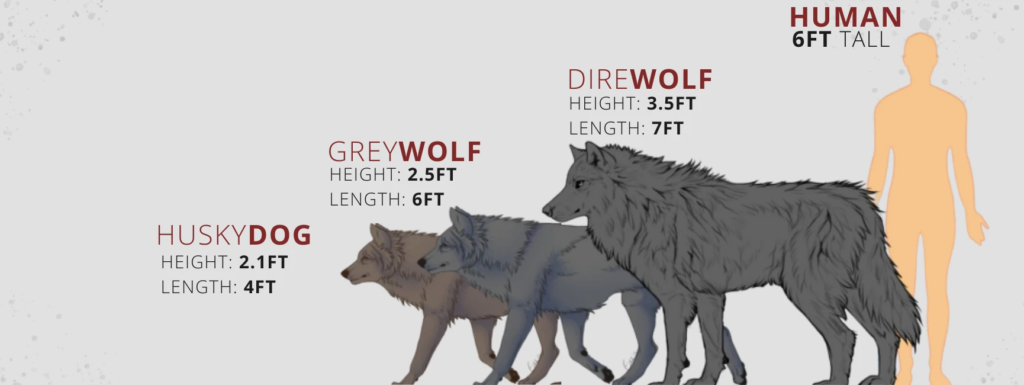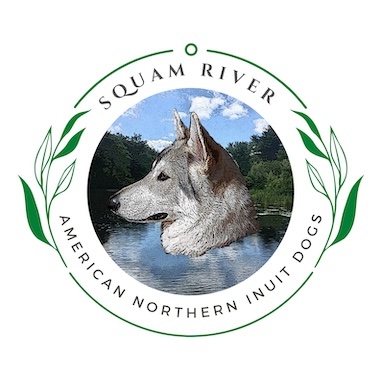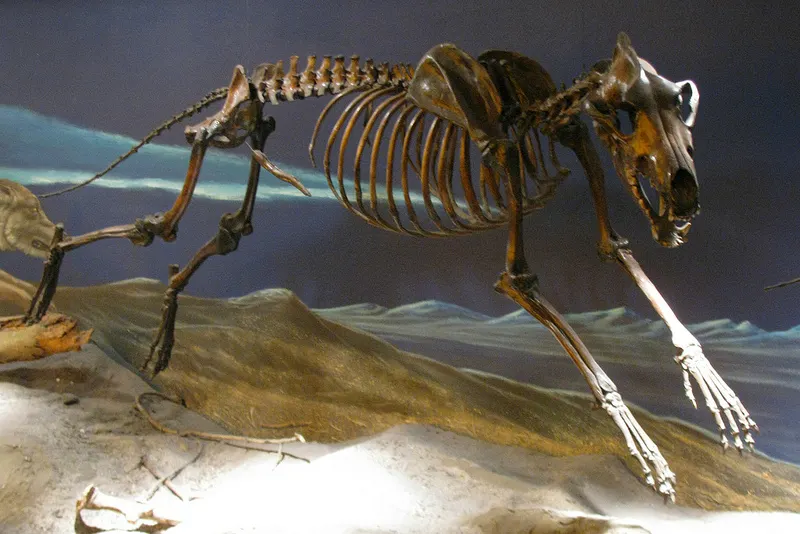Game of Thrones
In 2011, HBO’s Game of Thrones Season One first aired on TV. adapted from George R. R. Martin’s Song of Ice & Fire series, The show became an instant hit worldwide. One of the leading figures was that of the direwolf.
The Historic Dire Wolf
“The actual dire wolf (Aenocyon dirus[10] /iːˈnɒsaɪ.ɒn ˈdaɪrəs/) is an extinct canine. It is one of the most famous prehistoric carnivores in North America, along with its extinct competitor Smilodon. The dire wolf lived in the Americas and eastern Asia during the Late Pleistocene and Early Holocene epochs (125,000–9,500 years ago). The species was named in 1858, four years after the first specimen had been found. Two subspecies are recognized: Aenocyon dirus guildayi and Aenocyon dirus dirus. The largest collection of its fossils has been obtained from the Rancho La Brea Tar Pits in Los Angeles.”1
The dire wolf was about 20 percent larger on average than the largest modern gray wolves (Canis lupus): the Yukon wolf and the northwestern wolf.

Its skull and dentition matched those of C lupus, but its teeth were larger with greater shearing ability, and its bite force at the canine tooth was stronger than any known Canis species. These characteristics are thought to be adaptations for preying on Late Pleistocene megaherbivores, and in North America, its prey is known to have included western horses, ground sloths, mastodons, ancient bison, and camels.
James Gorman writes, “[T]he first sequencing of the dire wolf genome showed an unexpectedly large genetic separation between the two species, big enough that the dire wolf is not just a separate species but a separate genus…The last common ancestor of the gray wolf and the dire wolf was about 5.7 million years ago, the researchers reported. And another surprise was that the dire wolf didn’t seem to interbreed with other species — as dogs, wolves, coyotes and other canids do. In evolutionary terms, it met a lonely end.”3
The Direwolves in Game of Thrones
In his epic fantasy novel series A Song of Ice and Fire, George R.R. Martin created a fictional world, where a series of Great Houses ruled over the continents of Westeros and Essos. House Stark of Winterfell was a Great House of Westeros, and the royal house of the Kingdom of the North. Its sigil was a grey direwolf‘s head facing sinister on a white field over green.

Martin characterized the dire wolf—which he spelled “direwolf”—as an unusually large and intelligent species of wolf.
In the opening scenes of the HBO adaptation of the series, Eddard Stark—head of House Stark—together with his sons Robb and Bran, his “bastard” son Jon Snow and his ward Theon Greyjoy, found a dead female direwolf. It had died after giving birth to five pups, which still huddled against the corpse for warmth.
Eddard advocated killing the pups out of mercy, but Jon convinced his “father” that this was an omen: the direwolf was the symbol of House Stark. Eddard had five trueborn children. Eddard agreed that his children could have the pups, but only if they raised them themselves with no help from the servants.
Just as the party was leaving, Jon found a sixth pup, an albino runt of the litter. Theon mockingly pointed out that this one belonged to Jon.6
The puppies in this scene were all Northern Inuits.
When Eddard traveled south to serve as Hand of the King to King Robert Baratheon, he brought his daughters Sansa and Arya, along with their pet direwolves Lady and Nymeria—the first direwolves to be seen so far south in hundreds of years. After Nymeria attacked Prince Joffrey, Arya drove her away to prevent her execution. Robert commanded Eddard to kill Lady instead.
Altogether, the direwolves remained loyal to their masters, the remaining four staying by their sides until eventually those of Robb, Bran, and Theon had also been killed. By the end of the series, only two of the original six direwolves were still alive: Nymeria—who traveled the Riverlands, leading a pack of gray wolves, and who chose not to return to Arya—and Jon’s direwolf, Ghost, who stayed by Jon’s side.
The Direwolves & the Northern Inuits
HBO® could not use real wolves while filming, due to laws in the U.K. and to the involvement of small children in the series. Instead, the production team decided on Northern Inuit dogs as looking the most like a real wolf.
The Northern Inuit Society (NIS) provided Northern Inuit dogs to assist with filming the pilot for Season One a year before it aired on TV. The Society was ultimately given the contract for NIS breeders to provide NIs to play both the puppy and young direwolves for the first season, due to the dogs’ easygoing nature and trainability.4
In Season 2, real wolves were used to portray the adolescent direwolves. Using a variety of camera tricks and techniques, along with CGI (Computer Generated Imagery), the shots were augmented to make the wolves appear larger. They were then composited with the background and actors for the final shots. As a result, the direwolves in Season Two and following were played by real-life wolves that had been super-sized in post-production.
Sources & Resources
The content of this page was adapted, cited, paraphrased, and borrowed from the following sources:
- Dire Wolf. Wikipedia. https://en.wikipedia.org/wiki/Dire_wolf
- Anderson, Andrea. 2021. Dire Wolves Were Real—And Even Stranger Than We Thought. National Geographic. https://www.nationalgeographic.com/animals/article/dire-wolf-dna-study-reveals-surprises.
- Gorman, James. 2021. DNA Reveals the Real Lives of ‘Game of Thrones’ Dire Wolves. https://www.nytimes.com/2021/01/13/science/dire-wolf-genome.html
- Game of Thrones. Northern Inuit Society. http://nisociety.com/about-the-breed/game-of-thrones/
- House Stark. House of the Dragon Wiki. https://gameofthrones.fandom.com/wiki/House_Stark
- House of the Dragon Wiki. https://gameofthrones.fandom.com/wiki/Direwolf
- 7 Celebrities Who Fell in Love With Their Animal Co-Stars So Much They Refused to Be Separated. bright Side.
https://brightside.me/wonder-people/7-celebrities-who-fell-in-love-with-their-animal-co-stars-so-much-they-refused-to-be-separated-795342/. - Lyons, Margaret. 2013. Sansa Stark Adopted Her Dire Wolf in Real Life. Vulture (August 19). https://www.vulture.com/2013/08/sansa-stark-dire-wolf-sophie-turner.html.
- Dog Times. Game of Thrones actress adopts her “direwolf”. https://dogtime.com/trending/18280-game-of-thrones-actress-sophie-turner-adopts-direwolf.


